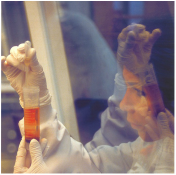
Current Projects - Nitric oxide, prostaglandin I2 and anti-platelet drugs
(Click here to see Tim Warner discuss this project on Faculti Media)
|
|
The endothelial cells that line all blood vessels produce nitric oxide and prostaglandin I2 (PGI2), which are short-lived molecules that inhibit the activity of blood platelets. Outside of the body blood clots quickly, and it is believed that the influence of the endothelial cells is central to maintaining the blood as a fluid.
The most widely used anti-platelet drugs are aspirin and P2Y12 receptor blockers (such as clopidogrel, prasugrel and ticagrelor). As well as having direct effects on the platelets to stop the strong thrombotic effects of thromboxane A2 (aspirin) and ADP (P2Y12 receptor blockers) these drugs also interact with the nitric oxide and prostaglandin I2 released from the blood vessel wall. We believe these interactions are very important to the effectiveness of aspirin and P2Y12 receptor blockers as anti-thrombotic drugs, and that differences in the ability of endothelial cells to make nitric oxide and prostaglandin I2 may provide an explanation for the different effectiveness of anti-platelet drugs in different patients. We published a hypothesis around this some years ago in the journal Heart and more recently in Expert Reviews of Hematology and British Journal of Pharmacology. The slideshow displays some examples of our experimental work. You can read our first mechanistic examination published in PNAS, and related papers in British Journal of Clinical Pharmacology, Acta Physiol and the Journal of Thrombosis and Haemostasis. Our principal collaborator in this work is Prof. Jane Mitchell (Imperial College, London). |